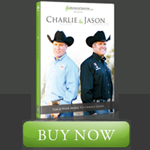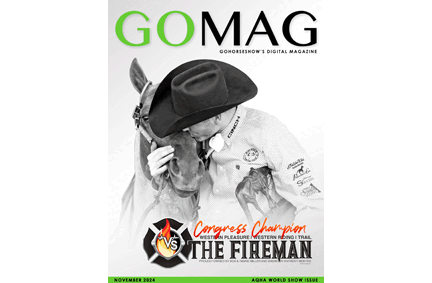The National Cutting Horse Association reports that the Colorado and Utah state veterinarians have confirmed two cases of equine herpesvirus (EHV-1) in Colorado. Currently, there are reports of equine herpesvirus myeloencephalopathy affecting an unconfirmed number of horses and farms across the U.S. and Canada, according to a report from the American Association of Equine Practitioners.
Equine herpesvirus myeloencephalopathy is another name for the neurologic disease associated with equine herpesvirus infections, according to the United State Department of Agriculture. Neurological signs appear as a result of damage to blood vessels in the brain and spinal cord associated with EHV infection. Interference with the blood supply leads to tissue damage and a subsequent loss in normal function of areas in the brain and spinal cord. To date, nine EHVs have been identified worldwide. Three of these – EHV-1, EHV-3, and EHV-4 – pose the most serious health risks for domesticated horses and can have significant economic impacts on the U.S. equine industry.
As a precautionary measure, the board of directors of the Breeders Invitational has canceled the cutting event scheduled for May 14-28 in Tulsa, Oklahoma. NCHA canceled the Mercuria-NCHA World Series of Cutting that was scheduled in conjunction with the Breeders Invitational.
NCHA Executive Director Jeff Hooper requests that owners and trainers report any horses that show neurological symptoms of EHV-1, which are fever, lack of coordination in the hind limbs and dribbling of urine.
“We are monitoring the situation and coordinating with USDA, the American Association of Equine Practitioners and the American Horse Council,” said Ward Stutz, senior director of breed integrity for the American Quarter Horse Association. “While we hope this outbreak does not necessitate the closing of state borders or the cancellation of shows during the most busy time of the year, our primary concern is the health and welfare of the horse. Owners should contact their equine veterinarian immediately if a horse shows any symptoms.
“Practicing good biosecurity and health measures is the best way to prevent the spread of the disease,” Stutz added. “Owners should familiarize themselves with the information provided below about EHV-1 and the best management practices to stop the spread of the disease.”
Both the EHV-1-affected horses competed at the NCHA Western National Championships in Ogden, Utah, from April 29 through May 8, 2011.
The Oklahoma Department of Agriculture announced today that there will be no restrictions on horses entering the state for upcoming major shows like the Oklahoma Quarter Horse Association Redbud Spectacular. Read more about Oklahoma’s policy on horses entering the state.
The virus is contagious to horses but can’t be transmitted to humans. Read more about quarantine practices to protect your herd.
The equine disease is not transmittable to humans. The virus’ most common strains cause abortion, respiratory disease and neurologic disease. Clinical signs include a fever typically within four-six days of exposure.
Please go to the following links for further information, especially if you had horses at that competition:
Colorado Department of Agriculture Press Release, 5/13/2011, “Equine Herpesvirus Confirmed in Two Colorado Horses.”
American Association of Equine Practitioners Fact Sheet: Equine Herpesvirus
National Cutting Horse Association
United States Department of Agriculture information
Colorado State University has released some answers to frequently asked questions about EHV-1 and how to treat it.
Frequently Asked Questions
Information from Colorado State University
1. How do we handle horses returning from events where they might have been exposed to this infection?
For horses that might have been exposed to the risk of infection, there are some steps to take to mitigate the risk at their home facility. Even if these horses are returning home from events at which no disease was reported, and even if these horses appear healthy, precautions are needed at this time as these horses could bring it home and spread it at their home farm – this is the classic way this disease spreads:
These horses should be isolated from any other horses when they return to their home facility. Isolation requires housing them away from other horses, using different equipment to feed, clean and work with them that is used with any other horses, and rigorous hygiene procedures for horse handlers (hand hygiene, wearing separate clothes when contacting the horses, etc.). Please discuss this with your veterinarian.
We strongly advise owners to call their vets to discuss how long to keep the horses isolated at home, but even if they don’t develop fevers this should be at least 14-21 days.
These horses should have their temperature taken twice a day, as temperature is typically the first and most common sign of infection – horses with elevated temperatures (101.5 degrees Fahrenheit or greater) should be swabbed by your vet to find out whether they are shedding EHV-1.
If a horse develops a fever and is found to be shedding EHV-1 then the level of risk to other horses on the premises increases significantly. Those affected farms should work closely with their veterinarian to manage that situation, if it develops.
2. What do we do if we already have a potentially exposed horse on a farm?
It still makes sense to isolate this horse from other horses. Even though it might have already been in contact with them, start isolation procedures to stop further exposure. It is important to not mix horses from different groups to accomplish this. Try to isolate the suspect horse without moving other horses from one group to another – segregation of horse groups is the key, because this will help you reduce spread if an outbreak starts.
Check temperatures of all horses on the farm twice daily (fever spikes can be missed if you check once daily). If fevers are detected, then test for EHV-1.
The value of starting healthy horses on anti-viral treatment when there is no evidence of disease on the farm is questionable. The treatment is expensive, the drug (Valtrex – valacyclovir) may have limited availability, and prophylactic therapy against equine herpesvirus myeloencephalopathy will only work while drug is being administered. Therefore it is more likely to be effective if administered when fever is first detected.
3. What anti- viral treatments can I use against equine herpesvirus myeloencephalopathy on a farm?
If EHM is present on a farm, then the risk to other horses at that farm is greatly increased. Stringent quarantine and biosecurity procedures must be implemented immediately.
Treatment of horses with clinical neurological disease (EHM) is largely supportive – the use of anti-viral drugs is not known to be of value at this stage. Use of anti-inflammatory drugs is recommended: flunixin meglumine (0.5 to 1 mg/kg, IV, q 24 hours).
For horses on the farm that develop fever, test EHV-1 positive or have a high risk of exposure, anti-viral drugs may decrease the chance of developing EHM.
Currently, the treatment of choice in a febrile EHV-1-infected horse to prevent the development of EHM is valacyclovir (Valtrex), given orally. The use of oral acyclovir is unlikely to be of any value, as it is not absorbed from the GI tract.
We currently recommend valacyclovir (Valtrex) for prophylactic therapy (at a dose of 30 mg/kg q 8 hr for two days, then 20 mg/kg q 12 hr for one to two weeks). Maintain on higher dose rate if the horse is still febrile. This is an expensive drug, and daily treatment costs can typically be $20-$300 per day. Generic forms of valacyclovir might be available and might be marginally cheaper.
The use of valacyclovir in horses that have already developed signs of EHM is questionable at this time, in that circumstance the use of intravenous ganciclovir is preferable as it might have greater potency against the disease. (The dose of ganciclovir is 2.5 mg/kg q 8 hr IV for one day then 2.5 mg/kg q 12 hr IV for one week.)
4. Is there any value to using booster vaccinations against EHV-1 at this time?
Unfortunately, there is no evidence at this time that current EHV-1 vaccines can prevent EHM.
The more potent EHV-1 vaccines have been shown to reduce nasal shedding and in some cases reduce viremia. These products might have some theoretical value against EHM (by reducing viremia), and certainly against spread of the virus.
The more potent EHV-1 vaccines include: Rhinomune, or Calvenza EHV, Boehringer Animal Health; Pneumabort-K, Pfizer Animal Health; Prodigy Intervet Schering-Plough Animal Health.
If horses on the farm are previously vaccinated against EHV-1, then booster vaccination should quickly increase immunity, and perhaps reduce spread of EHV-1 if it is present.
Vaccination in these circumstances is controversial, as some authorities speculate that immunity to EHV-1 may play a role in the development of EHM. While this is unproven, it remains a possibility. The use of vaccination is therefore a risk-based decision. Additional sources of information are listed below. Until we know more about this outbreak, caution is recommended at all times to reduce the spread of infection. Movement of horses on and off farms should be limited whenever possible.








